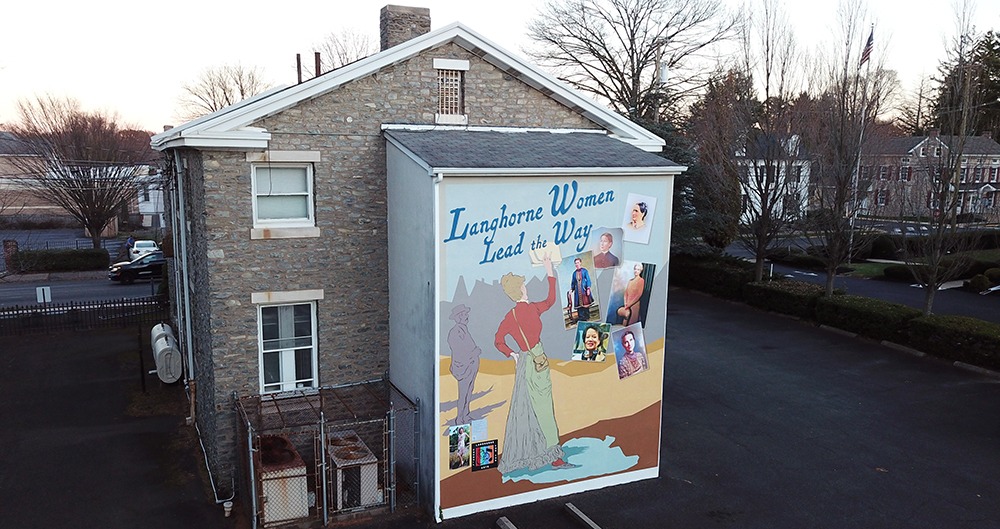Estimated reading time: 5 minutes
Table of contents
The world of art has undergone a profound transformation in recent years, with the advent of digital technology. Digital mural art has emerged as a powerful and innovative medium, blurring the lines between traditional and contemporary artistic practices. This blog post will explore the exciting intersection of mural art and technology like NFTs. It will also look into the potential of 3D mapping and murals. Lastly, it will consider the future of mural art in the digital age.
Dubus Studio: Pioneers of Digital Mural Art
Dubus Studio is at the forefront of the digital mural art movement, pushing the boundaries of creativity and innovation. The studio has years of experience in traditional mural painting. It has seamlessly embraced digital technologies to create stunning works. These works are impactful. Dubus Studio’s skill in digital design is remarkable. They bring their clients visions to life in new and exciting ways.
Digital Tools for Mural Artists
The availability of powerful digital tools has revolutionized the way mural artists create and design their work. Photoshop and Procreate are powerful digital tools. Artists can use them to create detailed and realistic prototypes of mural designs before committing to paint. These software programs allow artists to experiment with different colors, patterns, and compositions. They make sure that the final mural will have the desired impact. By visualizing the mural design in a digital format, artists can make adjustments. They can refine their ideas before transferring them to a physical surface. This process can help to prevent costly mistakes and make sure that the mural meets the client’s expectations.
Mural Art and NFTs
NFTs (Non-Fungible Tokens) have gained significant popularity in recent years. They offer artists a new way to monetize their work. NFTs also help in authenticating their creations. Digital murals can be converted into NFTs, allowing artists to sell their creations on blockchain marketplaces. This provides artists with a new revenue stream and ensures the ownership and authenticity of their work.
But, there is ongoing debate about the long-term viability and reliability of NFTs. Some critics argue that NFTs are simply a passing trend. Others believe they represent a revolutionary new way for artists to monetize their work. As technology evolves, we have yet to see how NFTs will influence the art market’s future.
Generative AI and Mural Art
Generative AI is another emerging technology that is starting to be used in the creation of mural art. By using algorithms to generate new and unique designs, artists can explore new creative possibilities and experiment with different styles. This technology can also be used to create personalized murals that show the individual preferences of the client or community.
AI-powered tools can significantly enhance the mural design process. By inputting your first ideas or sketches, these tools can generate various design options. They help you explore different possibilities and refine your concept. Some AI tools can create photo-realistic renderings of your mural designs. This feature gives you a clear visualization of how the final product will look. This can be very helpful when working with clients or stakeholders. They need a more concrete representation of the mural before making decisions.
3D Mapping and Murals
3D mapping technology has the potential to transform the way we experience murals. By projecting digital images onto physical surfaces, artists can create immersive and interactive mural experiences. This technology can be used to create animated murals, interactive games, or even educational displays.
Photo-mapping in Mural Art
Photo-mapping is a technique that involves projecting digital images onto physical surfaces, creating a seamless blend of reality and art. In murals, photo-mapping can be used to add depth, dimension, and a sense of realism to the artwork. For example, a mural depicting a cityscape can project images of actual buildings onto the wall. This creates a more immersive experience for viewers. It also makes the experience more engaging. Additionally, photo-mapping can incorporate historical photographs into a mural. It can include other visual elements, adding layers of meaning and context to the artwork.
Drones and Mural Art
In recent years, drones have become increasingly popular tools for a variety of purposes, including photography, videography, and even art. Drones can be used to capture stunning aerial footage of murals, providing viewers with a unique perspective on the artwork. Additionally, drones help in creating murals by giving artists a bird’s-eye view of the working area. They help make sure that the mural is properly aligned and proportioned.
The Future of Mural Art
The future of mural art is bright, with digital technology playing an increasingly important role. As technology continues to advance, we can expect to see even more innovative and exciting mural projects. Digital murals will likely become more commonplace. The integration of augmented reality and virtual reality can further enhance the mural experience.
Conclusion
The digital age has ushered in a new era for mural art. Artists can embrace digital tools and technologies. This allows them to push the boundaries of their creativity. They can create truly unique and impactful works. From NFTs to 3D mapping, the possibilities are endless. As the digital landscape continues to evolve, we can expect thrilling progress in mural art. The future holds even more exciting developments.
Related Links
Looking to Bring the Magic of Storytelling to Your Own Space?
- Turn your vision into reality!
- Let’s discuss how a collaborative mural project can inspire your community.
- Discover the benefits of a mural creation and contact me today for a free consultation!


